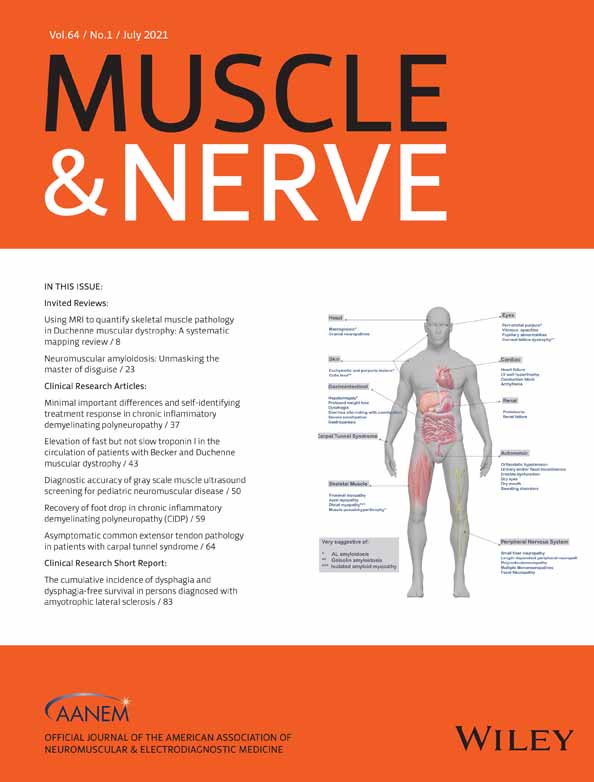Vocal fold injection material does not preclude interpretation of laryngeal electromyography
Presented at American Laryngological Association Annual Conference, Austin, TX 5/1/2019.
Abstract
Introduction/Aims
Temporary vocal fold injection (VFI) is a common treatment for acute and subacute vocal fold paralysis (VFP). Laryngeal electromyography (LEMG) is useful for diagnosing neurogenic causes of VFP. This study evaluated whether the presence of VFI material prevents interpretation of LEMG in patients with acute and subacute VFP.
Methods
Patients with acute and subacute unilateral VFP (onset ≤6 mo) who underwent temporary VFI within 3 mo preceding LEMG were evaluated. A matched control group that did not undergo VFI was also studied. The LEMG team (laryngologist and electromyographer) performed and interpreted LEMG using a pre-specified protocol, including qualitative and quantitative motor unit analysis.
Results
Eighteen patients with VFI underwent LEMG successfully with interpretation of spontaneous activity and motor unit recruitment. Fourteen patients were seen in follow-up to determine accuracy of established LEMG prognosis. Seven of seven subjects with poor LEMG prognosis did not recover vocal fold motion. Five of seven subjects with fair LEMG prognosis recovered vocal fold motion. Findings were similar for the control group.
Discussion
VFI augmentation material did not prevent interpretation of meaningful LEMG data in patients with acute and subacute VFP, and accurate prognoses of vocal fold motion recovery were established.
CONFLICT OF INTEREST
None of the authors has any conflict of interest to disclose.
Open Research
DATA AVAILABILITY STATEMENT
The data that support the findings of this study are available from the corresponding author upon reasonable request.




